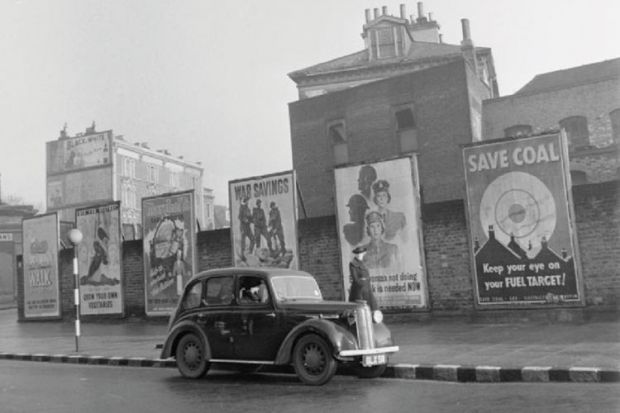A major research project will investigate Britain’s wartime Ministry of Information – inspiration for the Ministry of Truth in George Orwell’s dystopian novel Nineteen Eighty-Four – in the very building where the department was once housed.
“The ministry introduced something new to British society – the idea of an arm of government with the power to control information,” said principal investigator Simon Eliot, professor of the history of the book at the University of London’s School of Advanced Study.
Operational from 1939 to 1946, it funded composers, a film unit, touring exhibitions and loudspeaker vans, while churning out a plethora of posters and pamphlets, and arranging transport for the distribution of material in other countries.
Notable cultural figures the ministry employed more or less directly included Orwell himself; poets John Betjeman, Cecil Day-Lewis and Dylan Thomas; novelists Arthur Koestler and Mervyn Peake; actor Laurence Olivier; architectural historian Nikolaus Pevsner; cookery writer Elizabeth David; and BBC supremo Lord Reith.
After a shaky start, it was run for most of the war by Winston Churchill’s friend Brendan Bracken, whose initials Orwell jokingly adopted for “Big Brother” in Nineteen Eighty-Four.
Yet despite its vast importance as “a very sophisticated and modern communications system”, observed Professor Eliot, “there has been no official history of the MoI, unlike almost every regiment and other government department”.
The Institute of English Studies at the School of Advanced Study, in collaboration with the department of digital humanities at King’s College London and the National Archives at Kew, has now secured a four-year research grant from the Arts and Humanities Research Council worth close to £800,000 to produce a publications and communications history of the ministry.
The institute is located in Senate House, whose lower floors were once mostly occupied by the MoI, although Professor Eliot noted that “the rooms have since been renumbered and we can’t find Room 101”.
Although the ministry was never remotely totalitarian, Orwell used it in Nineteen Eighty-Four as “a useful clothes horse on which he could drape his rather hideous garments”, Professor Eliot suggested.
The main focus of the Make Do and Mend project, as befits Professor Eliot’s background as a book historian, will be on the ministry as “a government-sponsored publishing operation – an enormous publishing firm of a rather odd sort, constantly adjusting its ‘product’ in response to its frequent surveys of public opinion”. Local museums and societies will also be enlisted to find older volunteers willing to discuss their experiences as the “audience” for its output.
Although many people working there were “worried about too much censorship, fatuous kinds of propaganda and adopting the enemy’s tactics”, Professor Eliot said he hoped to illuminate how the ministry still managed to exert a strong influence on what was published through its control of the paper supply and its reliance on existing networks.
“It was responsible for newspaper censorship,” he explained, but it tended to use a light touch and “friendly advice over a drink” rather than overt directives.
Along with academic articles and a major monograph, the project will digitise a great deal of material, such as the reports on public opinion currently available only on microfilm. This will be made accessible as part of MoI Digital, an online museum and archive designed to “offer the user a multimedia experience of the Home Front during the Second World War”.
Register to continue
Why register?
- Registration is free and only takes a moment
- Once registered, you can read 3 articles a month
- Sign up for our newsletter
Subscribe
Or subscribe for unlimited access to:
- Unlimited access to news, views, insights & reviews
- Digital editions
- Digital access to THE’s university and college rankings analysis
Already registered or a current subscriber? Login
